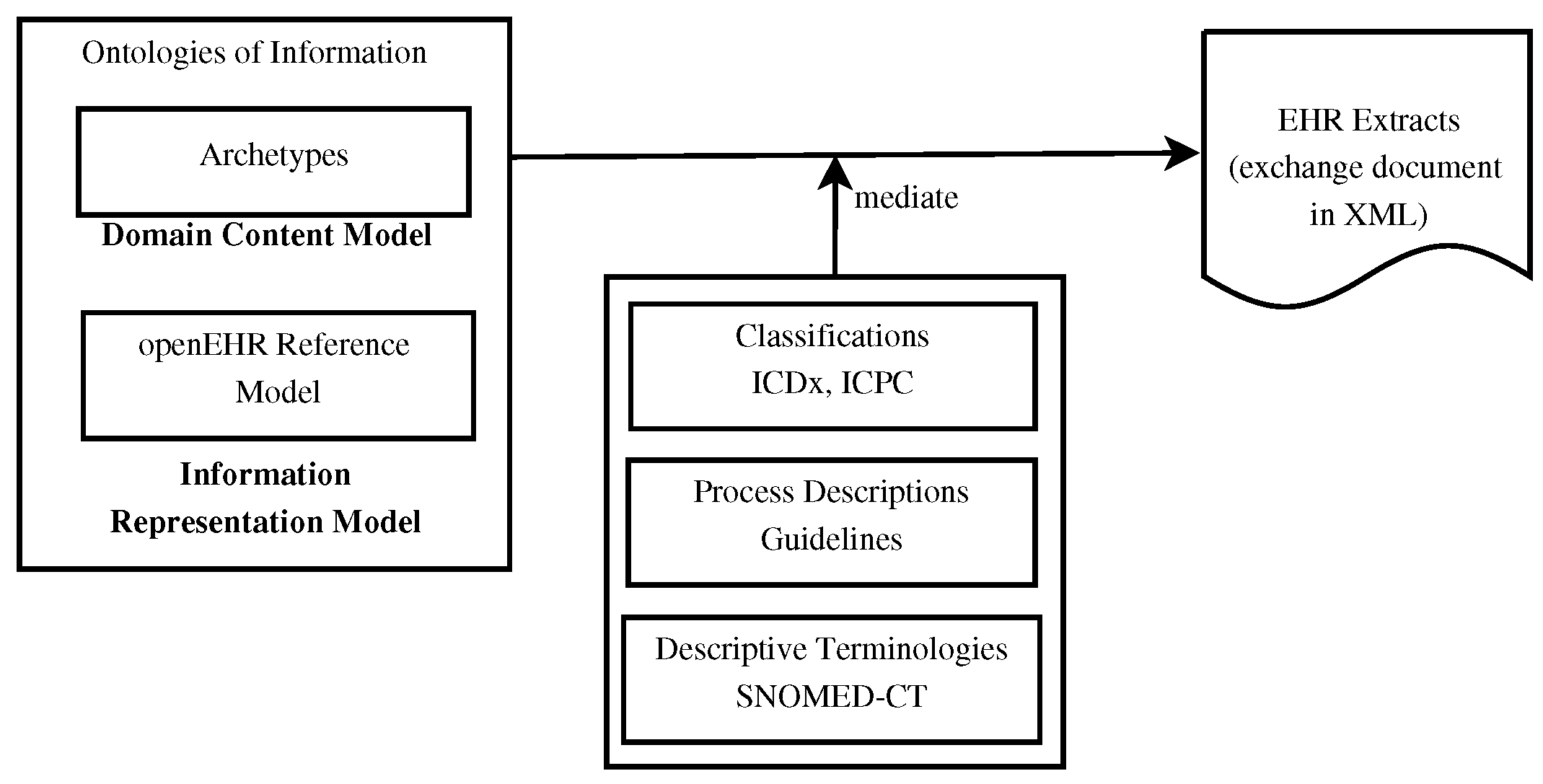Difference between revisions of "Template:Article of the week"
Shawndouglas (talk | contribs) (Updated article of the week text) |
Shawndouglas (talk | contribs) (Updated article of the week text) |
||
| Line 1: | Line 1: | ||
<div style="float: left; margin: 0.5em 0.9em 0.4em 0em;">[[File: | <div style="float: left; margin: 0.5em 0.9em 0.4em 0em;">[[File:Fig1 Sachdeva Information22 13-2.png|240px]]</div> | ||
'''"[[Journal: | '''"[[Journal:Using knowledge graph structures for semantic interoperability in electronic health records data exchanges|Using knowledge graph structures for semantic interoperability in electronic health records data exchanges]]"''' | ||
[[Data sharing|Information sharing]] across medical institutions is restricted to [[information]] exchange between specific partners. The lifelong [[electronic health record]] (EHR) structure and content require standardization efforts. Existing standards such as [[openEHR]], [[Health Level 7]] (HL7), and ISO/EN 13606 aim to achieve data independence along with semantic interoperability. This study aims to discover knowledge representation to achieve semantic health data exchange. openEHR and ISO/EN 13606 use archetype-based technology for semantic interoperability. The HL7 Clinical Document Architecture is on its way to adopting this through HL7 templates. Archetypes are the basis for knowledge-based systems, as these are means to define clinical knowledge. The paper examines a set of formalisms for the suitability of describing, representing, and reasoning about archetypes ... ('''[[Journal:Using knowledge graph structures for semantic interoperability in electronic health records data exchanges|Full article...]]''')<br /> | |||
<br /> | <br /> | ||
''Recently featured'': | ''Recently featured'': | ||
{{flowlist | | {{flowlist | | ||
* [[Journal:CustodyBlock: A distributed chain of custody evidence framework|CustodyBlock: A distributed chain of custody evidence framework]] | |||
* [[Journal:Development and governance of FAIR thresholds for a data federation|Development and governance of FAIR thresholds for a data federation]] | * [[Journal:Development and governance of FAIR thresholds for a data federation|Development and governance of FAIR thresholds for a data federation]] | ||
* [[Journal:Design of a data management reference architecture for sustainable agriculture|Design of a data management reference architecture for sustainable agriculture]] | * [[Journal:Design of a data management reference architecture for sustainable agriculture|Design of a data management reference architecture for sustainable agriculture]] | ||
}} | }} | ||
Revision as of 17:21, 23 January 2023
Information sharing across medical institutions is restricted to information exchange between specific partners. The lifelong electronic health record (EHR) structure and content require standardization efforts. Existing standards such as openEHR, Health Level 7 (HL7), and ISO/EN 13606 aim to achieve data independence along with semantic interoperability. This study aims to discover knowledge representation to achieve semantic health data exchange. openEHR and ISO/EN 13606 use archetype-based technology for semantic interoperability. The HL7 Clinical Document Architecture is on its way to adopting this through HL7 templates. Archetypes are the basis for knowledge-based systems, as these are means to define clinical knowledge. The paper examines a set of formalisms for the suitability of describing, representing, and reasoning about archetypes ... (Full article...)
Recently featured:










